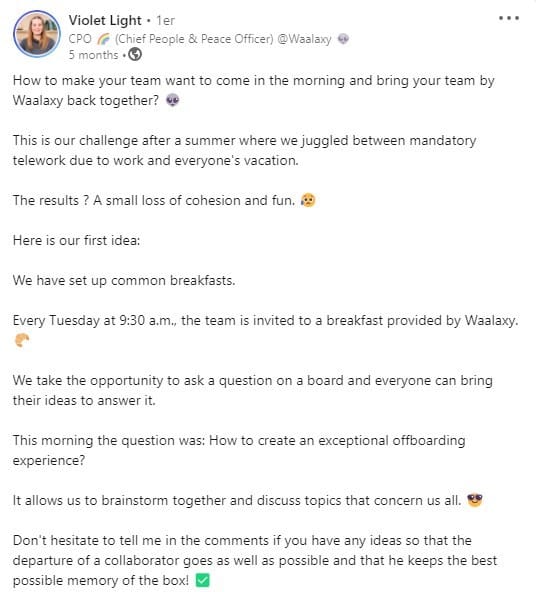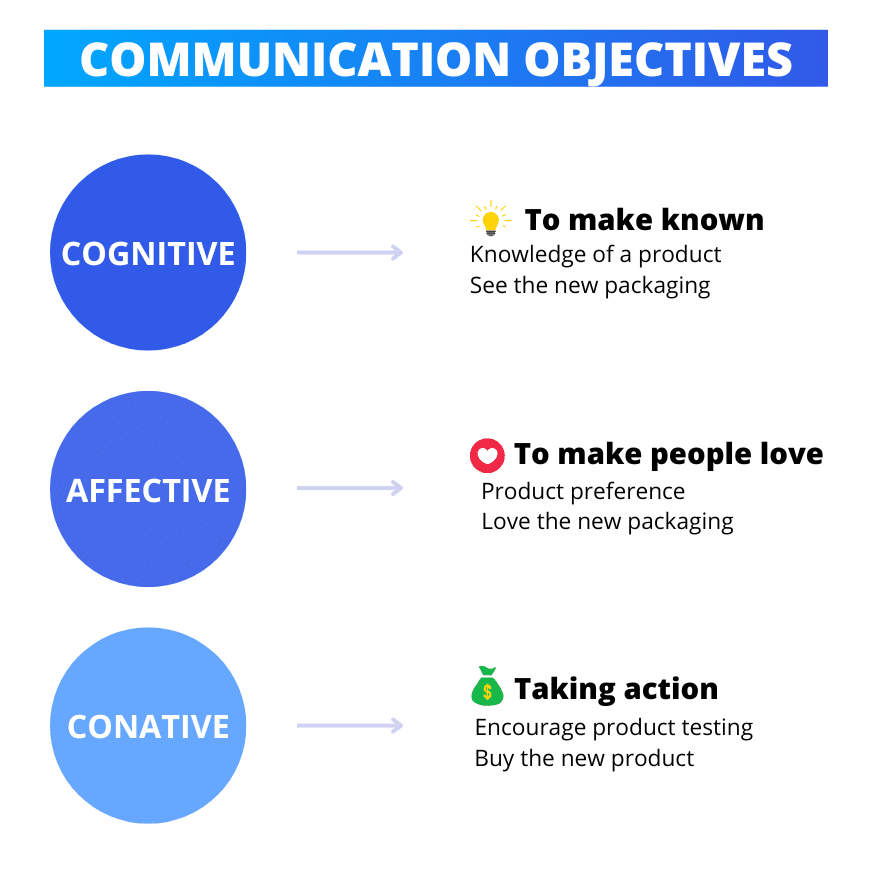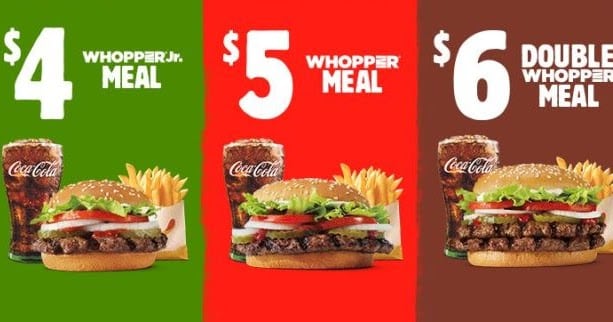When you need to convey a message to your employer, to a brand or during a marketing campaign, always make sure you have a clear and concise communication objectives. Don’t know how to do it? This article is for you. 🥰
Here is today’s menu:
- The definition.
- The presentation of the 3 different types of communication objectives.
- And for dessert, an example to illustrate what we mean.
Are you ready? Enjoy your meal! 🧑🏼🍳
What is a communication objective ?
In the word effective communication there is… communicate. Yes, it is about speaking, making known, transmitting and sharing something with someone. It can be a good news, a movie, an important information or a recipe.
Often used in marketing tactics, the communication objective allows you to channel and focus ideas on a communication strategy to adopt in order to know what steps you need to go through to reach your goal.
However, these objectives are not the same between internal and external communication and this is what we will see right away! ⬇️
Objective of internal communication
Work takes a huge place in our lives. In fact, during the day, we see more of our colleagues than our loved ones, because we spend at least 8 hours a day at work. ⏲️
That’s why, just like in a family, internal communications is necessary and I would even say, primordial in order to improve the motivation of employees, increase understanding, closeness and avoid any turnover. ✨
Here are some internal communications strategies objectives:
- Carry out weekly reports on the company’s progress.
- Instill a strong company culture.
- Valuing the work of employees.
- Carry out team building activities to reinforce group cohesion.
- Communicate regularly on the latest information.
For example, at Waalaxy👽, we have set up a breakfast every Tuesday morning, which allows us to meet and discuss a new theme every morning. 
Objective of external communication
Let’s now move on to external communication, i.e. corporate communications, outside the company, such as a company’s customers and prospects. Here, we will find rather this type of objectives:
- To make a product or service known. 💡
- Communicate the brand’s values. 📢
- Spark the interest of the potential customer 👀
- Convey a typical messaging during a marketing campaign. 💭
- Convert prospects into customers. 🫰🏼
What are the 3 objectives of communication?
You need to know that strategic communication objectives can be distinguished into 3 types: cognitive, affective and conative. Don’t panic, you don’t need to speak Mandarin 🈴 to understand these 3 words, we will explain them as simply as possible. ☀️ 
#1. Cognitive objective
We start with the first phase, the cognitive stage. 💡 This is about letting your prospect know that you exist, that you have just released a new product or service. You are therefore looking to attract his attention in connection with your brand, with the aim of improving your notoriety.
Cognitive objective example
Here are some examples of the cognitive stage. ⬇️
| Type of objective | Examples |
| Cognitive. | – To let people know that the brand exists. – Expand brand awareness. – To let customers know our values. – Inform about the opening of our website or store. – Product presentation. |
#2. Affective goal
Once your target audience has discovered your company, brand, product or service, your goal is to seduce them by creating interest and desire for you. You must therefore work on your brand image in order to inspire the confidence of your targets. This second phase is called the affective stage. 💟
Affective objective example
Let’s find out some examples of the affective stage. ⬇️
| Type of goals | Examples |
| Affective. | – Create a relevance bond of sympathy between the brand and the customers. – Create interest in the brand. – To make stakeholder like our values. – Build loyalty among our prospects. – Raise awareness of our marketing communications actions. – Reinforce the brand image with media relations. |
#3. Conative objective
Finally, let’s finish with the last phase, the conative stage, based on action, the “making act”. Here, we want your future customer to take action, i.e. to buy by going to a point of sale, by generating traffic on your website or by asking for a trial.
Be careful, this step of your marketing strategy is not really the last one, we must not forget the loyalty. Whether it’s via social media strategy or an influencer campaign, your e-reputation is important and loyalty allows you to improve your public relations and, above all, to maintain your customer relationship.
Conative objective example
Here are some examples of the conative stage. ⬇️
| Type of objectives | Examples |
| Conative | – Encourage trial with effective marketing. – Create traffic at the point of sale. – Trigger word-of-mouth. – Make people visit the website. – Make people buy on the website. |
Cognitive affective conative communication objectives examples
What could be better than a concrete example to understand what the cognitive, affective and conative communications plan is! And to make your mouth water, let’s take the example of the king of burgers, Burger King (we applaud the joke please 👏🏼).  Simple, basic, in this visual interactive media part of a integrated marketing communication, the cognitive objective is well present.
Simple, basic, in this visual interactive media part of a integrated marketing communication, the cognitive objective is well present.
Concerning the positioning, the customer is informed that a new burger has been released, the Whopper. No more information than that, we let the customer lick his lips 👅and find out about the release dates.

For the second visual, the emotional goal, Burger King is creating a positive image by saying that this program is for everyone. No other information is specified on purpose to emphasize happiness.

Finally, for the third and last visual, the conative objective is to make people act by proposing an offer, with different prices. This encourages immediate consumption.
You will have understood, it is important to take your time and set an adequate communication plan to your customers before launching your marketing campaign. 🥰
How about a recap?
Here’s a little chart that I think sums up the cognitive affective and conative business communication nicely, it’s a gift! 🎁
| Type of goals | Examples |
| Cognitive | – To spread the word that the brand exists. – Expand branding awareness. – To let customers know our values. – Inform about the opening of our website or our operational store. – Product presentation. |
| Affective | – Create a bond of sympathy between the brand and the customers with an action plan. – To arouse interest in the brand. – Make people like our prioritize values. – Build loyalty among our prospects. – Raise awareness of our actions. – Reinforce the brand image with inbound marketing. |
| Conative | – Encourage trial with a digital strategy. – Create traffic at the point of sale for business goals. – Trigger word-of-mouth. – Make people visit the website to improve the E-reputation. – Make people buy on the website for business objectives. |
Frequently asked questions of the article marketing communication objectives
Not so fast, we’re just getting to dessert, we hope you still have some room for 3 little treats. 🍰
How to formulate communication objectives?
Actually, depending on your industry and field of business, there are several ways to formulate your communication objectives and strategies but, remember this, the objective includes:
- 🎯 A target,
- 📇 A task to drive,
- 💱 A margin for change,
- 📍 A geographic area,
- 🕰️ A duration.
What is the main purpose of the communication?
Its primary purpose is to inform your interlocutor, whether it is a colleague, a relative, a future client or even your employer of an information you wish to transmit. It is therefore an exchange, a sharing of information on any communication channel such as social media strategy, flyers, or webmarketing. 🫱🏼🫲🏽
What is the objective of communication in a company?
In companies, it is called corporate communication or internal communication. It allows on the one hand to reinforce the links between the employees but also to inform them about the news and the health of the company. This makes the employees feel confident. 💟
There you go, I hope you have ingested all the necessary information regarding the communication objectives. Enjoy your digestion and see you soon! 👋🏼











